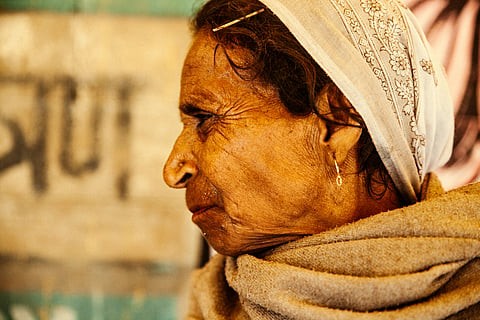



India is redefining global TB eradication efforts through rapid, point-of-care molecular diagnostics that enable early, accurate detection even in remote settings. Indigenous technologies such as Truenat have accelerated diagnosis, improved treatment initiation, and strengthened primary healthcare delivery. International case studies from Nigeria, Mozambique, and Tanzania demonstrate their global impact. However, challenges such as high operational costs, supply chain gaps, limited digital connectivity, and the need for integrated nutrition and social support remain. With sustained investment, stronger partnerships, and equitable access, India can lead the global shift toward inclusive and effective TB control.

Copyright infringement not intended
Picture Courtesy: The Hindu
Tuberculosis (TB) remains one of the world’s deadliest infectious diseases, disproportionately impacting low- and middle-income countries. In recent years, the global TB elimination agenda has been reshaped by innovative, decentralised, point-of-care diagnostics — many of them developed in India. The awarding of the 2025 Kochon Prize to Goa-based Molbio Diagnostics underscores India’s rising leadership in accessible, scalable TB solutions.
|
Must Read: TUBERCULOSIS | TB | INDIA TB REPORT 2024 | WORLD TUBERCULOSIS DAY | |
Point-of-Care Molecular Diagnostics represent a major shift in global public health, where accurate laboratory-grade testing is brought directly to communities, instead of requiring patients to travel to distant, centralised laboratories. These technologies use molecular methods such as polymerase chain reaction (PCR) or nucleic acid amplification but are engineered to be portable, rugged, battery-operated, and user-friendly, making them suited for rural, remote, and resource-poor settings.
Despite being small, these machines replicate the functions of advanced laboratory devices:
This enables health systems to detect infections as soon as symptoms appear, improving treatment outcomes and preventing transmission.
Decentralised and On-Site Testing: POC-MD systems are designed to operate away from central laboratories, enabling advanced molecular testing in primary health centres, mobile clinics, tribal regions, conflict zones, disaster camps, and remote villages.
This directly addresses access gaps in low-resource settings.
Rapid turnaround time: Traditional culture tests take weeks; sputum smear microscopy misses many cases.
POC-MD platforms deliver lab-quality results in 30–60 minutes, allowing same-day diagnosis and initiation of treatment — crucial for TB, HIV, influenza, and maternal–child health disorders.
High accuracy with molecular technology: These devices detect genetic material of pathogens using:
This ensures high sensitivity and specificity, including for early-stage and low-bacterial-load infections.
Detection of Drug Resistance: One of the game-changing features is the ability to detect drug-resistant strains at the point of care.
Example: India’s Truenat system identifies rifampicin resistance in TB, enabling early initiation of correct therapy and reducing the spread of resistant strains.
Applications Beyond TB:
POC-MD is expanding across disease areas:
This positions POC-MD as a pillar of universal health coverage, epidemic preparedness, and primary health care strengthening.
Strengthening primary health care and advancing universal coverage: Bringing laboratory-grade molecular testing to primary health centres and health and wellness centres converts these facilities into true first-contact points for diagnosis and care. This alignment with the Ayushman Bharat Health and Wellness Centre agenda reduces referrals to distant labs, shortens the patient pathway and helps bring essential diagnostics within reach of marginalised populations. National policy documents and implementation plan for health and wellness centres explicitly list point-of-care diagnostics as part of the package of services to be delivered at the primary level.
Faster disease control: Rapid on-site molecular tests shrink the interval between symptom, diagnosis and treatment. For tuberculosis, same-day diagnosis and treatment initiation substantially cut onward transmission and reduce the risk that partial therapy will select for drug resistance. Randomised and implementation studies in high-burden settings have shown that on-site molecular testing increases case detection, speeds treatment start (within seven days in trial settings) and improves linkage to care — outcomes that directly lower mortality and catastrophic costs for households. These effects are central to achieving WHO End-TB targets.
Demonstrating and scaling indigenous innovation: India has moved from being an importer of advanced diagnostics to an exporter of affordable, field-ready platforms. The World Health Organization’s endorsement of India’s Truenat platform in 2020 catalysed broader adoption, and Indian firms have since deployed thousands of devices across low-resource countries. Recognition such as the Kochon Prize for Molbio Diagnostics underscores how frugal innovation can advance global health equity. Widespread adoption creates market opportunities, supports South-South cooperation and reduces dependence on expensive imports.
Real-time surveillance and outbreak responsiveness: When point-of-care devices are integrated with digital health platforms (electronic reporting, national registries and telemedicine), they become early warning tools for outbreaks and support rapid public-health responses. Timely electronic reporting shortens surveillance loops, enabling quicker containment measures and more efficient resource allocation. World Bank analyses of care pathways find measurable time and cost savings from decentralised molecular testing, reinforcing its role in stronger surveillance systems.
Consumable and per-test costs: While capital costs of POC-MD devices may be manageable, recurring costs — cartridges, reagents and quality-control consumables — can be high and create budgetary pressure for national programmes. Comparative cost studies show that per-test costs are in the same order as established cartridge-based platforms, and cost-effectiveness depends on volumes, supply arrangements and efficient utilisation. Procurement strategies and pooled purchasing are therefore critical to keep per-test costs sustainable.
Supply-chain reliability and maintenance in remote areas: POC-MD needs a dependable supply chain for cartridges, spare parts and calibrated consumables, plus systems for preventive maintenance and timely repairs.
Human resources, training and quality assurance: Although many POC-MD platforms are designed for ease of use, frontline staff require initial training and periodic refresher courses to manage sample collection, device operation, biosafety and data reporting.
Digital connectivity and data systems: Real-time reporting and surveillance rely on digital connectivity and interoperable health information systems. Gaps in internet coverage, data standards, and electronic medical record integration can blunt the surveillance advantages of POC-MD.
National TB Elimination Program (NTEP)
TB Mukt Bharat Abhiyan
Point-of-care molecular diagnostics represent a transformative opportunity for India to strengthen primary healthcare, detect diseases early, and build a resilient, self-reliant health system. However, their impact will remain limited unless supported by robust supply chains, trained personnel, digital integration, and comprehensive follow-up care. With strategic investment and inclusive deployment, they can become a cornerstone of India’s public health transformation.
Source: The Hindu
|
Practice Question Q. Point-of-care molecular diagnostics are being seen as a game changer for India’s public health system. Discuss their potential to transform healthcare delivery in India. What key challenges must be addressed to ensure their effective implementation? (250 words) |
India’s large population, high levels of poverty and undernutrition, crowded living conditions, and gaps in early detection contribute to its high TB burden. Social determinants like poor ventilation, low immunity, and limited access to primary healthcare also worsen vulnerability.
Yes. India has recorded a 21% decline in TB incidence between 2015 and 2024, faster than the global decline. Treatment coverage, reporting, and mortality indicators have also improved due to expanded diagnostics and programme reforms.
India has expanded molecular testing, digital X-rays, AI-enabled detection, and community screening drives. Mobile diagnostic vans and integration with digital platforms like Ni-kshay have improved early detection.




© 2025 iasgyan. All right reserved